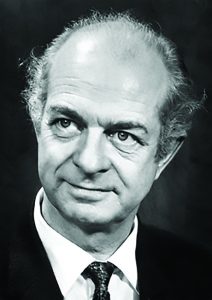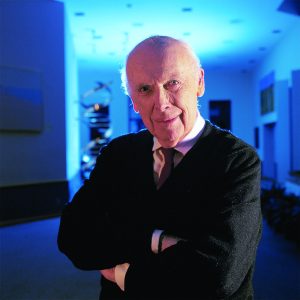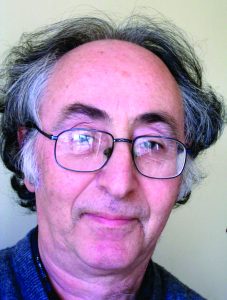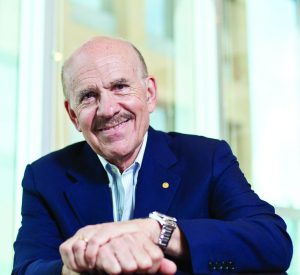No scientific award is more coveted than the Nobel Prize. In the eyes of the public, this prize, especially in the three traditional science categories of chemistry, physics, and physiology or medicine, is virtually synonymous with scientific brilliance. At the same time, the stories of the more than 600 Nobelists in the hard sciences pose a question that bears intriguing implications for the field of skepticism: To what extent do remarkable levels of intelligence immunize individuals against equally remarkable lapses in critical thinking? As we will discover, psychological research offers provisional answers to this question and tantalizing clues to its resolution.
Some authors have invoked the term Nobel Disease to describe the tendency of many Nobel winners to embrace scientifically questionable ideas (Gorski 2012). We adopt this term with some trepidation given its fraught implications. Some authors (e.g., Berezow 2016) appear to assume that Nobel winners in the sciences are more prone to critical thinking errors than are other scientists. It is unclear, however, whether this is the case, and rigorous data needed to verify this assertion are probably lacking.
In this article, we explore the more circumscribed question of whether and to what extent the Nobel Prize, conceptualized as a partial but imperfect proxy of scientific brilliance, is incompatible with irrationality. To do so, we draw on case studies of several Nobel-winning scientists who appear to have succumbed to the Nobel Disease. In doing so, we remain cognizant of the inferential limitations of case studies: They are of unknown representativeness, and they can be readily cherry picked to support one’s hypotheses. Still, case studies can often be helpful in generating hypotheses to be investigated in more systematic studies. In addition, they can sometimes afford existence proofs—demonstrations that a given phenomenon can occur. In the case of the Nobel Disease, the capsule case histories we present strongly suggest that intellectual brilliance can coexist with yawning gaps in skeptical thinking.
Specifically, we offer brief descriptions of eight Nobel laureates in the sciences who embraced “weird” ideas. Following Shermer (2003), we define weird ideas as assertions that are (a) highly implausible in light of scientific knowledge; (b) roundly rejected by essentially all scientific experts; and (c) based mostly or exclusively on anecdotal or uncorroborated evidence. Because merely entertaining the possibility of an unsupported claim, such as the existence of extrasensory perception (ESP), does not indicate a critical thinking lapse, we focus on Nobelists who clung to one or more weird idea with considerable conviction.
The Nobel Disease: Eight Thumbnail Sketches
 Linus Pauling
(1901–1994) received the 1954 Nobel Prize in Chemistry
for research on the chemical bond (he also won the Nobel
Peace Prize in 1962). In 1941, Pauling was diagnosed
with Bright’s disease, which causes chronic inflammation
of the kidneys. He adopted a low-protein, salt-free diet
and ingested vitamin supplements, attributing his
improvement to the latter. He later claimed that 1,000
milligrams of vitamin C a day can reduce the incidence
of common colds by 45 percent. Pauling reportedly
consumed at least 12,000 milligrams of vitamin C daily,
far above the recommended daily allowance of sixty
milligrams. Studies in the 1970s and 1980s by Pauling
and psychiatrist Ewan Cameron seemed to suggest that
megadoses of vitamin C were helpful in prolonging
terminal cancer patients’ lives (Cameron and Pauling
1979). Nevertheless, the controls were not matched for
age, stage of cancer, or quality of everyday
functioning, rendering the data virtually
uninterpretable. Furthermore, excess vitamin C is
excreted through the urine and is of scant therapeutic
value. Pauling also pursued the hypothesis that
students’ grades improved after drinking orange juice
for several months. In an article in Science,
as well as in other publications, Pauling (1968) further
argued that megadoses of vitamin C are effective for
schizophrenia. Controlled studies afford little support
for this hypothesis (Hoffer 2008).
Linus Pauling
(1901–1994) received the 1954 Nobel Prize in Chemistry
for research on the chemical bond (he also won the Nobel
Peace Prize in 1962). In 1941, Pauling was diagnosed
with Bright’s disease, which causes chronic inflammation
of the kidneys. He adopted a low-protein, salt-free diet
and ingested vitamin supplements, attributing his
improvement to the latter. He later claimed that 1,000
milligrams of vitamin C a day can reduce the incidence
of common colds by 45 percent. Pauling reportedly
consumed at least 12,000 milligrams of vitamin C daily,
far above the recommended daily allowance of sixty
milligrams. Studies in the 1970s and 1980s by Pauling
and psychiatrist Ewan Cameron seemed to suggest that
megadoses of vitamin C were helpful in prolonging
terminal cancer patients’ lives (Cameron and Pauling
1979). Nevertheless, the controls were not matched for
age, stage of cancer, or quality of everyday
functioning, rendering the data virtually
uninterpretable. Furthermore, excess vitamin C is
excreted through the urine and is of scant therapeutic
value. Pauling also pursued the hypothesis that
students’ grades improved after drinking orange juice
for several months. In an article in Science,
as well as in other publications, Pauling (1968) further
argued that megadoses of vitamin C are effective for
schizophrenia. Controlled studies afford little support
for this hypothesis (Hoffer 2008).
 William Shockley
(1910–1989), along with John Bardeen and Walter
Brattain, received the 1956 Nobel Prize in Physics for
inventing the transistor. As a professor at Stanford
University, Shockley’s interests drifted into genetics.
He argued without qualification that the Black vs. White
IQ difference is largely or entirely genetic. He wrote,
“My research leads me inescapably to the opinion that
the major cause of the American Negro’s intellectual and
social deficits is hereditary and racial genetic in
origin and thus not remediable to a major degree by
practical improvements in environment” (New Scientist
1973, 432). He even maintained that “Nature has
color-coded groups of individuals so that statistically
reliable predictions of their adaptability to
intellectual rewarding and effective lives can easily be
made and profitably used by the pragmatic man-in-the
street” (Shockley 1972, 307). Shockley endorsed the idea
of “retrogressive evolution,” proposing that Blacks were
reproducing more rapidly than Whites, causing a decline
in the population’s overall intelligence. He promoted
various radical solutions to this perceived problem,
including offering financial incentives to genetically
disadvantaged groups to undergo sterilization. Shockley
donated his sperm to the Repository for Germinal Choice,
pejoratively termed the “Nobel Prize sperm bank,”
established with the intent of creating a eugenics
program (Morrice 2005). Shockley was also a fervent
advocate of the polygraph (“lie detector”) test, so much
so that he once ordered his employees to take the test
and proposed that Nobel laureates be asked the following
question while connected to a polygraph machine: When
you say there is no racial difference in IQ, do you
really believe it? (Shurkin 1997, 241).
William Shockley
(1910–1989), along with John Bardeen and Walter
Brattain, received the 1956 Nobel Prize in Physics for
inventing the transistor. As a professor at Stanford
University, Shockley’s interests drifted into genetics.
He argued without qualification that the Black vs. White
IQ difference is largely or entirely genetic. He wrote,
“My research leads me inescapably to the opinion that
the major cause of the American Negro’s intellectual and
social deficits is hereditary and racial genetic in
origin and thus not remediable to a major degree by
practical improvements in environment” (New Scientist
1973, 432). He even maintained that “Nature has
color-coded groups of individuals so that statistically
reliable predictions of their adaptability to
intellectual rewarding and effective lives can easily be
made and profitably used by the pragmatic man-in-the
street” (Shockley 1972, 307). Shockley endorsed the idea
of “retrogressive evolution,” proposing that Blacks were
reproducing more rapidly than Whites, causing a decline
in the population’s overall intelligence. He promoted
various radical solutions to this perceived problem,
including offering financial incentives to genetically
disadvantaged groups to undergo sterilization. Shockley
donated his sperm to the Repository for Germinal Choice,
pejoratively termed the “Nobel Prize sperm bank,”
established with the intent of creating a eugenics
program (Morrice 2005). Shockley was also a fervent
advocate of the polygraph (“lie detector”) test, so much
so that he once ordered his employees to take the test
and proposed that Nobel laureates be asked the following
question while connected to a polygraph machine: When
you say there is no racial difference in IQ, do you
really believe it? (Shurkin 1997, 241).
 James Watson
(1928–), like Shockley, has advanced several highly
dubious claims about race. Watson, the 1962 Nobel Prize
winner for codiscovering the structure of DNA along with
Sir Francis Crick, has maintained categorically that
Blacks are inherently less intelligent than Whites, a
view he reiterated in a 2018 documentary. Watson has
also suggested that obese people are less ambitious than
other people; that exposure to sunlight in equatorial
regions increases sexual urges; and that owing to their
higher levels of melanin, dark-skinned people have a
stronger sex drive than fair-skinned people (Brown
2001).
James Watson
(1928–), like Shockley, has advanced several highly
dubious claims about race. Watson, the 1962 Nobel Prize
winner for codiscovering the structure of DNA along with
Sir Francis Crick, has maintained categorically that
Blacks are inherently less intelligent than Whites, a
view he reiterated in a 2018 documentary. Watson has
also suggested that obese people are less ambitious than
other people; that exposure to sunlight in equatorial
regions increases sexual urges; and that owing to their
higher levels of melanin, dark-skinned people have a
stronger sex drive than fair-skinned people (Brown
2001).
 Brian Josephson
(1940–) won the 1973 Nobel Prize in Physics “for his
theoretical predictions of the properties of a
supercurrent through a tunnel barrier” (Nobel Media AB
2019). In the late 1960s, Josephson became a follower of
Maharishi Mahesh Yogi, the founder of transcendental
meditation (TM), and argued that TM “allows traumatic
experiences to come back unrepressed to the mind’s eye”
(New Scientist 1974, 416). In the early 1970s,
Josephson launched the Mind-Matter Unification Project
at Cambridge University to explore the relations between
quantum mechanics and consciousness. In a booklet to
mark the one-hundredth anniversary of the Nobel Prize,
Josephson noted that he was working hard to keep the
United Kingdom at the “forefront of research” on
telepathy. In addition, Josephson has been a vocal
advocate of “water memory,” the purported mechanism
underlying the debunked practice of homeopathy (Ernst
2010), which is premised on the notion that water can
somehow “remember” the chemical properties of substances
diluted in it. He has also promoted cold fusion, the
discredited hypothesis that nuclear reactions can occur
at room temperature.
Brian Josephson
(1940–) won the 1973 Nobel Prize in Physics “for his
theoretical predictions of the properties of a
supercurrent through a tunnel barrier” (Nobel Media AB
2019). In the late 1960s, Josephson became a follower of
Maharishi Mahesh Yogi, the founder of transcendental
meditation (TM), and argued that TM “allows traumatic
experiences to come back unrepressed to the mind’s eye”
(New Scientist 1974, 416). In the early 1970s,
Josephson launched the Mind-Matter Unification Project
at Cambridge University to explore the relations between
quantum mechanics and consciousness. In a booklet to
mark the one-hundredth anniversary of the Nobel Prize,
Josephson noted that he was working hard to keep the
United Kingdom at the “forefront of research” on
telepathy. In addition, Josephson has been a vocal
advocate of “water memory,” the purported mechanism
underlying the debunked practice of homeopathy (Ernst
2010), which is premised on the notion that water can
somehow “remember” the chemical properties of substances
diluted in it. He has also promoted cold fusion, the
discredited hypothesis that nuclear reactions can occur
at room temperature.
 Nikolaas Tinbergen
(1907–1988), along with Karl von Frisch and Konrad
Lorenz, shared the 1973 Nobel Prize in Physiology or
Medicine for his discoveries on the organization and
causes of animal behavior (ethology). After receiving
this prize, Tinbergen applied his ethological theories
to autism spectrum disorder. His environmental
hypotheses concerning the etiology of autism were highly
speculative and inconsistent with burgeoning evidence at
the time that this condition is primarily of genetic and
neurological origin (Folstein and Rutter 1977). His work
culminated in a book coauthored with his wife (Tinbergen
and Tinbergen 1985) recommending “holding therapy” as a
treatment for autism. This technique is based on the
unsupported position that autism is caused by a
defective attachment of child to mother, leading to
interpersonal withdrawal and communication problems.
According to Tinbergen, to cure autism parents must hold
their children for long periods of time while trying to
establish eye contact with them, even if they resist it.
Subsequent data have indicated that holding therapy is
empirically unsupported and can in some cases be
physically dangerous (Mercer 2013).
Nikolaas Tinbergen
(1907–1988), along with Karl von Frisch and Konrad
Lorenz, shared the 1973 Nobel Prize in Physiology or
Medicine for his discoveries on the organization and
causes of animal behavior (ethology). After receiving
this prize, Tinbergen applied his ethological theories
to autism spectrum disorder. His environmental
hypotheses concerning the etiology of autism were highly
speculative and inconsistent with burgeoning evidence at
the time that this condition is primarily of genetic and
neurological origin (Folstein and Rutter 1977). His work
culminated in a book coauthored with his wife (Tinbergen
and Tinbergen 1985) recommending “holding therapy” as a
treatment for autism. This technique is based on the
unsupported position that autism is caused by a
defective attachment of child to mother, leading to
interpersonal withdrawal and communication problems.
According to Tinbergen, to cure autism parents must hold
their children for long periods of time while trying to
establish eye contact with them, even if they resist it.
Subsequent data have indicated that holding therapy is
empirically unsupported and can in some cases be
physically dangerous (Mercer 2013).
 Kary Mullis
(1944–2019) shared the Nobel Prize in Chemistry in 1993
with Michael Smith for creating polymerase chain
reaction (PCR), which allows a small amount of DNA to be
copied rapidly billions of times. Mullis expressed
forceful disagreement with the view that AIDS is caused
by the human immunodeficiency virus (HIV). He claimed
that this retrovirus is barely detectable in people with
AIDS, maintaining that this finding raises serious
questions concerning its role in the illness: “Years
from now, people will find our acceptance of the HIV
theory of AIDS as silly as we find those who
excommunicated Galileo” (Mullis 1998, 180). Mullis also
questioned the evidence for human-made global warming,
stating on his website that “we have no good reason to
think we understand climate. To make predictions about
what follows from here and when, and to audaciously
begin the discussion by implicating our humble species
in the whole thing is worse than audacious, it’s
pathetic.” In his autobiography, he endorsed several
other strange ideas, saying that he once encountered a
fluorescent raccoon that spoke to him (addressing him as
“doctor”) and suggesting that the raccoon might have
been an alien. In this book, Mullis also professed
belief in astrology, asking rhetorically, “How could an
institution of higher learning grant someone a Ph.D. in
psychology without requiring at least a few courses in
astrology?” (Mullis 1998, 151).
Kary Mullis
(1944–2019) shared the Nobel Prize in Chemistry in 1993
with Michael Smith for creating polymerase chain
reaction (PCR), which allows a small amount of DNA to be
copied rapidly billions of times. Mullis expressed
forceful disagreement with the view that AIDS is caused
by the human immunodeficiency virus (HIV). He claimed
that this retrovirus is barely detectable in people with
AIDS, maintaining that this finding raises serious
questions concerning its role in the illness: “Years
from now, people will find our acceptance of the HIV
theory of AIDS as silly as we find those who
excommunicated Galileo” (Mullis 1998, 180). Mullis also
questioned the evidence for human-made global warming,
stating on his website that “we have no good reason to
think we understand climate. To make predictions about
what follows from here and when, and to audaciously
begin the discussion by implicating our humble species
in the whole thing is worse than audacious, it’s
pathetic.” In his autobiography, he endorsed several
other strange ideas, saying that he once encountered a
fluorescent raccoon that spoke to him (addressing him as
“doctor”) and suggesting that the raccoon might have
been an alien. In this book, Mullis also professed
belief in astrology, asking rhetorically, “How could an
institution of higher learning grant someone a Ph.D. in
psychology without requiring at least a few courses in
astrology?” (Mullis 1998, 151).
 Louis J. Ignarro (1941–), along with Robert
Furchgott and Ferid Murad, received the 1998 Nobel in
Physiology or Medicine for his discoveries concerning
nitric oxide as a signaling molecule in the
cardiovascular system. The discovery facilitated the
development of new medications to treat cardiovascular
disease, as well as of Viagra. A few years after
receiving the Prize, Ignarro was hired as a consultant
for Herbalife, a company that develops and markets
empirically unsupported dietary supplements and
vitamins, and became a member of its Scientific Advisory
Board. Ignarro worked with Herbalife to promote a
dietary supplement, Niteworks, a powdery mix of amino
acids and antioxidants that purportedly boosts the
body’s nitric oxide production. In 2004, Ignarro and his
colleagues published a controlled study in mice touting
the benefits of Niteworks’s ingredients (Napoli et al.
2004). Despite the unverified applicability of Niteworks
to humans, Ignarro was quoted as saying, “What’s good
for mice is good for humans” (Evans 2004).
Louis J. Ignarro (1941–), along with Robert
Furchgott and Ferid Murad, received the 1998 Nobel in
Physiology or Medicine for his discoveries concerning
nitric oxide as a signaling molecule in the
cardiovascular system. The discovery facilitated the
development of new medications to treat cardiovascular
disease, as well as of Viagra. A few years after
receiving the Prize, Ignarro was hired as a consultant
for Herbalife, a company that develops and markets
empirically unsupported dietary supplements and
vitamins, and became a member of its Scientific Advisory
Board. Ignarro worked with Herbalife to promote a
dietary supplement, Niteworks, a powdery mix of amino
acids and antioxidants that purportedly boosts the
body’s nitric oxide production. In 2004, Ignarro and his
colleagues published a controlled study in mice touting
the benefits of Niteworks’s ingredients (Napoli et al.
2004). Despite the unverified applicability of Niteworks
to humans, Ignarro was quoted as saying, “What’s good
for mice is good for humans” (Evans 2004).
 Luc Montagnier
(1932–) and Françoise Barré-Sinoussi received the 2008
Nobel Prize in Physiology or Medicine for their
discovery of HIV. One year later, Montagnier published
two papers in
Interdisciplinary Sciences: Computational Life
Sciences, a journal he founded and edited. In one of them, he
maintained that diluted DNA from pathogenic bacterial
and viral species can emit electromagnetic waves. When
asked about his views about homeopathy, Montagnier
responded: “I can’t say that homeopathy is right in
everything. What I can say now is that the high
dilutions are right. … even at [a dilution of]
10−18, you can calculate that there is not a
single molecule of DNA left. And yet we detect a signal”
(Enserink 2010). Montagnier further claimed that most
neurological diseases arise from electromagnetic waves
emitted from viral or bacterial DNA in aqueous solutions
(Montagnier et al. 2009). He also claims that vaccines
cause autism and that autism can be successfully treated
using antibiotics.
Luc Montagnier
(1932–) and Françoise Barré-Sinoussi received the 2008
Nobel Prize in Physiology or Medicine for their
discovery of HIV. One year later, Montagnier published
two papers in
Interdisciplinary Sciences: Computational Life
Sciences, a journal he founded and edited. In one of them, he
maintained that diluted DNA from pathogenic bacterial
and viral species can emit electromagnetic waves. When
asked about his views about homeopathy, Montagnier
responded: “I can’t say that homeopathy is right in
everything. What I can say now is that the high
dilutions are right. … even at [a dilution of]
10−18, you can calculate that there is not a
single molecule of DNA left. And yet we detect a signal”
(Enserink 2010). Montagnier further claimed that most
neurological diseases arise from electromagnetic waves
emitted from viral or bacterial DNA in aqueous solutions
(Montagnier et al. 2009). He also claims that vaccines
cause autism and that autism can be successfully treated
using antibiotics.
The Nobel Disease: Other Examples
These eight individuals are merely a subset of Nobel laureates who have held weird ideas. Others include:
- Phillip Lenard, who won the Nobel Prize in Physics in 1905 for his research on cathode rays, and Alexis Carrel, who won the Nobel Prize in Physiology or Medicine in 1912 for the invention of the perfusion pump; both promoted eugenics and Nazi racial theories (Carrel 1935; Gunderman 2015).
- Portuguese neurosurgeon Egas Moniz won the Nobel Prize in Physiology or Medicine in 1949 for prefrontal lobotomy. At a conference, Moniz learned that severing the connections between the frontal lobes and the rest of the brain rendered chimpanzees docile; he then deduced that frontal lobotomy could be used to treat serious mental illness in humans and actively promoted it for this purpose (Tan and Yip 2014).
- Still, other examples of Nobelists venturing into doubtful scientific territory include Julian Schwinger (Nobel Prize in Physics in 1966 for work on quantum electrodynamics), who authored several theoretical articles on cold fusion; Ivar Giaver (Nobel Prize in Physics in 1973 for work on electron tunneling in superconductors), who has repeatedly professed skepticism concerning global warming; Arthur Schawlow (Nobel Prize in Physics in 1981 for the co-invention of the laser), who was a vocal advocate of the scientifically debunked practice of facilitated communication for autism (he appeared in the 1994 Frontline documentary The Prisoners of Silence); Richard Smalley (Nobel Prize in Chemistry in 1996 for the discovery of a third form of carbon), who has promoted anti-Darwinist ideas (Smalley 2005); and Wolfgang Pauli (Nobel Prize in Physics in 1945 for his discovery of the exclusion principle), who along with psychiatrist Carl Jung proposed the idea of synchronicity, a mystical phenomenon whereby events labeled as coincidences supposedly reveal an acausal connection between mental and physical experiences (Donati 2004).
Intelligence and Rationality: Implications for Skepticism
It perhaps goes without saying that Nobel laureates are not the only brilliant scientists to fall prey to questionable ideas. Alfred Russel Wallace, codiscoverer of the theory of natural selection along with Charles Darwin, advocated spiritualism and believed that nonmaterial forces explained the evolution of the human mind (Bensley 2006). Percival Lowell, a pioneer in planetary astronomy whose observations paved the way for the discovery of Pluto (Sharps et al. 2019), was convinced that he had discovered martian canals of intelligent origin. More recently, William Happer, a retired Princeton physicist whose discoveries facilitated higher-quality images of people’s lungs and astronomical objects, has forcefully rejected the scientific consensus on climate change (CO₂ Coalition 2016).
The Nobel Disease, along with the stories of these three scientists, strongly suggest that high levels of general intelligence, traditionally conceptualized as the capacity to analyze and evaluate information, do not preclude high levels of irrational thinking (Shermer 2003; Stanovich 2009; Sternberg 2004). Intelligence tends to be only modestly correlated with immunity to most cognitive biases, such as confirmation bias and neglect of base rates (Stanovich and West 2008), consistent with the observation that even exceedingly smart people can fall prey to thinking errors. Whereas scores on intelligence measures reflect maximal performance (how well people can perform when pushed to the limit), scores on most cognitive bias measures reflect typical performance (how well people generally perform in everyday life) (Cronbach 1960). Therefore, even highly intelligent people may neglect to exercise their critical thinking capacities when they are insufficiently motivated to do so, especially when they are certain they are right. Although highly intelligent individuals may be more capable than other individuals of subjecting ideas to skeptical scrutiny, they may not always feel compelled to do so (Bensley 2006).
Preliminary evidence further suggests that intelligent people may have a somewhat larger bias blind spot than other people, meaning they are less aware of their propensity toward biases (Stanovich et al. 2013). Some authors have further argued that high levels of intelligence may exacerbate the risk of critical thinking failures; for instance, Sternberg (2004) proposed that several cognitive errors prevalent among the highly intelligent can predispose to irrationality; several may account for the weird ideas of some Nobel laureates. Unrealistic optimism occurs when people believe that because they are smart, they need not worry about intellectual errors. The sense of omniscience arises when people believe they are so intelligent that they know virtually everything. The sense of invulnerability emerges when people believe they are so smart that they are essentially immune to mistakes. If Sternberg is correct, by virtue of their high intellect Nobel laureates may be at risk for peculiar ideas, especially if they are not sufficiently intellectually humble.
Because personality data suggest that highly creative scientists tend to be more self-confident than other scientists (Feist 1998), intellectual humility may be more the exception than the rule among Nobel laureates in the sciences. As a consequence, Nobelists may need to be on guard against “intellectual overreach,” the mistake of assuming that because one is an expert in one domain, one is likely to display comparable levels of expertise in other domains (Dubner 2014).
In closing, our admittedly limited sample of Nobel Disease case studies reminds us that we should not confuse intelligence with rationality, nor confidence with correctness. They also remind us that we should be careful not to suspend our scientific skepticism even in the face of pronouncements by the most accomplished of scientists.
References
Bensley, A.B. 2006. Why great critical thinkers sometimes fail to think critically. Skeptical Inquirer 30(4): 47–52.
Berezow, A. 2016. Paul Krugman now has Nobel Disease. American Council on Science and Health. Available online at https://www.acsh.org/news/2016/12/18/paul-krugman-now-has-nobel-disease-10609.
Brown, P. 2001. Watson’s ‘sun and sex’ lecture upsets audience. Nature Medicine 7: 137.
Cameron, E., and L.C. Pauling. 1979. Cancer and Vitamin C. Corvallis, Oregon: Linus Pauling Institute of Science and Medicine.
Carrel, A. 1935. Man, the Unknown. New York: Doubleday.
CO₂ Coalition. 2016. Happer’s Statement: CO₂ Will Be a Major Benefit to the Earth (November 29). Available online at https://co2coalition.org/2016/04/30/happers-statement-co2-will-be-a-major-benefit-to-the-earth/.
Cronbach, L.J. 1960. Essentials of Psychological Testing (2nd ed.). Oxford, UK: Harper.
Donati, M. 2004. Beyond synchronicity: The worldview of Carl Gustav Jung and Wolfgang Pauli. Journal of Analytical Psychology 49: 707–728.
Dubner, S. 2014. Intellectual Overreach (July 24). Available online at https://www.youtube.com/watch?v=6hbnFQu4Cgw.
Enserink, M. 2010. French Nobelist escapes “intellectual terror” to pursue radical ideas in China. Science 330: 1732–1733.
Ernst, E. 2010. Homeopathy: What does the “best” evidence tell us. Medical Journal of Australia 192: 458–460.
Evans, D. 2004. Nobel Prize Winner Didn’t Disclose His Herbalife Contract. Available online at https://culteducation.com/group/969-herbalife/9601-nobel-prize-winner-didnt-disclose-his-herbalife-contract.html.
Feist, G. J. 1998. A meta-analysis of personality in scientific and artistic creativity. Personality and Social Psychology Review 2: 290–309.
Folstein, S., and M. Rutter. 1977. Genetic influences and infantile autism. Nature 265: 726–728.
Gorski, D. 2012. Luc Montagnier and the Nobel Disease. Science Based Medicine. Available online at https://sciencebasedmedicine.org/luc-montagnier-and-the-nobel-disease/.
Gunderman, R. 2015. When science gets ugly—the story of Philipp Lenard and Albert Einstein. The Conversation. Available online at https://theconversation.com/when-science-gets-ugly-the-story-of-philipp-lenard-and-albert-einstein-43165.
Hoffer, L.J. 2008. Vitamin therapy in schizophrenia. Israel Journal of Psychiatry and Related Sciences 45: 3–10.
Mercer, J. 2013. Holding therapy: A harmful mental health intervention. Focus on Alternative and Complementary Therapies 18: 70–76.
Montagnier, L., J. Aïssa., S. Ferris, et al. 2009. Electromagnetic signals are produced by aqueous nanostructures derived from bacterial DNA sequences. Interdisciplinary Sciences: Computational Life Sciences 1: 81–90.
Morrice, P. 2005. ‘The genius factory’: Test-tube superbabies. The New York Times (July 3). Available online at https://www.nytimes.com/2005/07/03/books/review/the-genius-factory-testtube-superbabies.html.
Mullis, K. 1998. Dancing Naked in the Mind Field. New York: Vintage Books.
Napoli, C., S. Williams-Ignarro., F. De Nigris, et al. 2004. Long-term combined beneficial effects of physical training and metabolic treatment on atherosclerosis in hypercholesterolemic mice. Proceedings of the National Academy of Sciences 101: 8797–8802.
New Scientist. 1973. Case for the plaintiff. New Scientist 57: 434–436.
———. 1974. Josephson on transcendental meditation. New Scientist 62(898): 416.
Nobel Media AB. 2019. Brian D. Josephson-Facts. Available online at https://www.nobelprize.org/prizes/physics/1973/josephson/facts/.
Pauling, L. 1968. Orthomolecular psychiatry. Science 160: 265–271.
Sharps, M.J., S. Hurd, B. Hoshiko, et al. 2019. Percival Lowell and the canals of Mars, part II: How to see things that aren’t there. Skeptical Inquirer 43(6): 48–51.
Shermer, M. 2003. Why smart people believe weird things. Skeptic 10(2): 62–73.
Shockley, W. 1972. Dysgenics, geneticity, raceology: A challenge to the intellectual responsibility of educators. The Phi Delta Kappan 53: 297–307.
Shurkin, J.N. 1997. Broken Genius. New York: Macmillan.
Smalley, R. 2005. Creation Scientists Applaud PA Judge’s Ruling against Intelligent Design [Press release]. Available online at http://www.freerepublic.com/focus/religion/1546528/posts.
Stanovich, K.E. 2009. What Intelligence Tests Miss: The Psychology of Rational Thought. New Haven, CT: Yale University Press.
Stanovich, K.E., and R.F. West. 2008. On the relative independence of thinking biases and cognitive ability. Journal of Personality and Social Psychology 94: 672–685.
Stanovich, K.E., R.F. West, and M.E. Toplak. 2013. Myside bias, rational thinking, and intelligence. Current Directions in Psychological Science 22: 259–264.
Sternberg, R.J. 2004. Why smart people can be so foolish. European Psychologist 9: 145–150.
Tan, S.Y., and A. Yip. 2014. António Egas Moniz (1874–1955): Lobotomy pioneer and Nobel laureate. Singapore Medical Journal 55: 175–176.
Tinbergen, N., and E.A. Tinbergen. 1985. Autistic Children: New Hope for a Cure. London: George Allen & Unwin.



